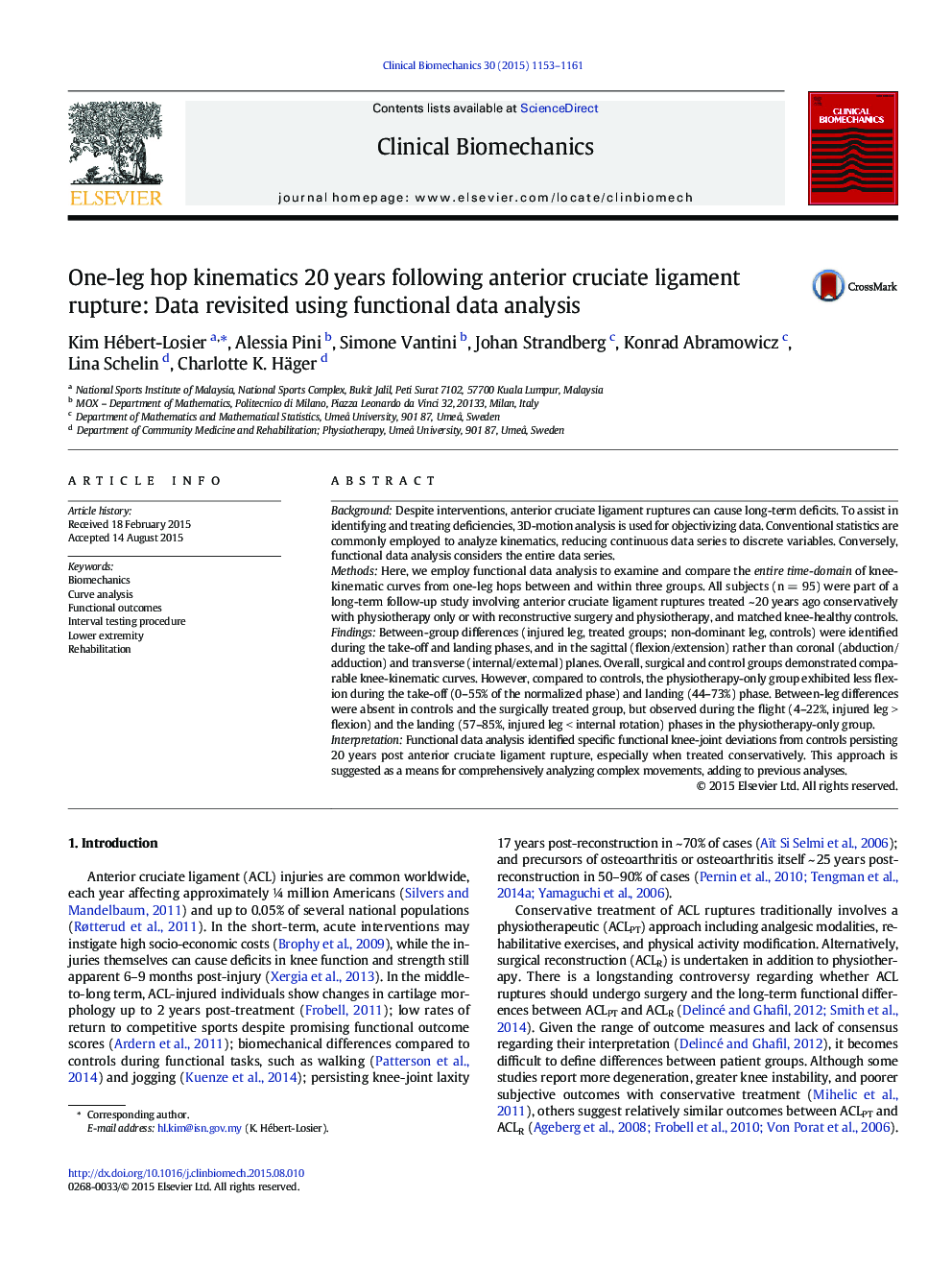| کد مقاله | کد نشریه | سال انتشار | مقاله انگلیسی | نسخه تمام متن |
|---|---|---|---|---|
| 4050086 | 1603748 | 2015 | 9 صفحه PDF | دانلود رایگان |
• Functional ANOVA was used on the entire time-domain of one-leg hop knee kinematics.
• Groups were post anterior cruciate ruptures (with and without surgery) and controls.
• The family-wise error rate was controlled on any interval of the time-domain.
• Deviations vs. controls exist 20 years post anterior cruciate injury (without surgery).
• Functional data analysis is useful for comprehensive analysis of complex movements.
BackgroundDespite interventions, anterior cruciate ligament ruptures can cause long-term deficits. To assist in identifying and treating deficiencies, 3D-motion analysis is used for objectivizing data. Conventional statistics are commonly employed to analyze kinematics, reducing continuous data series to discrete variables. Conversely, functional data analysis considers the entire data series.MethodsHere, we employ functional data analysis to examine and compare the entire time-domain of knee-kinematic curves from one-leg hops between and within three groups. All subjects (n = 95) were part of a long-term follow-up study involving anterior cruciate ligament ruptures treated ~ 20 years ago conservatively with physiotherapy only or with reconstructive surgery and physiotherapy, and matched knee-healthy controls.FindingsBetween-group differences (injured leg, treated groups; non-dominant leg, controls) were identified during the take-off and landing phases, and in the sagittal (flexion/extension) rather than coronal (abduction/adduction) and transverse (internal/external) planes. Overall, surgical and control groups demonstrated comparable knee-kinematic curves. However, compared to controls, the physiotherapy-only group exhibited less flexion during the take-off (0–55% of the normalized phase) and landing (44–73%) phase. Between-leg differences were absent in controls and the surgically treated group, but observed during the flight (4–22%, injured leg > flexion) and the landing (57–85%, injured leg < internal rotation) phases in the physiotherapy-only group.InterpretationFunctional data analysis identified specific functional knee-joint deviations from controls persisting 20 years post anterior cruciate ligament rupture, especially when treated conservatively. This approach is suggested as a means for comprehensively analyzing complex movements, adding to previous analyses.
Journal: Clinical Biomechanics - Volume 30, Issue 10, December 2015, Pages 1153–1161
